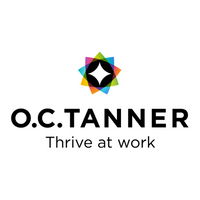How to make recognition an integral part of working life

The importance of integrated recognition
Companies with integrated recognition are four times’ more likely to have highly engaged employees and are twice as likely to have increased revenue over the past year. Plus, when recognition is embedded into the company culture, employees are three times’ more likely to report an extraordinary employee experience. However, a mere 16% of organisations have achieved a high level of recognition embeddedness, highlighting that most still have a long way to go.
What does a company with integrated recognition look like?
Recognition becomes part of the DNA in thriving organisations, integrating into everything, from the leadership approach through to the way it does business. Recognition will happen frequently and in a personal way across the organisation, as will be the instinctive celebratory response to all employee efforts and achievements. In practice, this means leaders giving recognition regularly and understanding individuals’ preferences and needs, delivering recognition moments that are tailored and highly personal. Peer-to-peer recognition will also be encouraged and take place on a daily basis with regular opportunities for colleagues to observe recognition moments.
Steps to making recognition integral
Obviously, tightly integrating recognition into everyday working life doesn’t occur overnight. Here are some steps towards making it happen:
- Encourage and nurture modern leaders who understand the importance of connecting people to purpose, accomplishment and each other. They must be quick to give praise and provide support and spend time getting to know their team members as individuals.
- Focus on connecting recognition to purpose so that employees understand how their efforts contribute to the bigger picture. And when recognition is given, it must be values-based so that everyone is clear which employee behaviours align with the company’s values.
- Elevate the recognition experience. By creating genuine personal experiences rather than ones that are ‘transactional’, employee experiences become truly memorable rather than routine. It’s also important to involve others in the recognition celebrations – leaders, peers and even family members.
- Recognise career anniversaries, efforts and results. Recognising just one or two of these won’t sufficiently embed recognition into the culture. All three must be recognised on a regular basis.
- Introduce technology that allows recognition to be part of the daily flow of work so that it can be quickly and easily given and received. This means integrating recognition software into email, the intranet and mobile plug-ins.
It’s time to play catch-up
With almost half of employee recognition programmes outdated and disconnected, it’s time for organisations to play catch-up. As it stands, many organisational recognition programmes were launched as distinct HR initiatives that were never designed to evolve, and the organisation has never invested the time into making them work. By prioritising recognition, repositioning it as a key organisational initiative rather than simply ‘a HR thing’, and then taking practical steps towards making it integral, this will enable recognition to become part of the company’s DNA.
All research findings are taken from O.C. Tanner’s 2021 Global Culture Report.
The author is David Danzig, director at O.C. Tanner Europe.
This article is provided by O.C. Tanner Europe.
Supplied by REBA Associate Member, O. C. Tanner
Giving teams the integrated tools they need when, where and how they need them.







